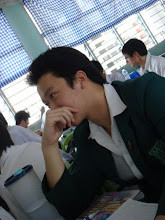"Look for the woman in the dress,” Coco Chanel once decreed, meaning that her customer, not her clothes, should draw the eye first. With the current vogue for blush - and “flesh”- colored fashion, following this directive is at once easy and difficult. Easy when the palette is deployed in transparent fabrics (like the Rochas nude lace top that made it impossible not to look at the model...or at least at her instantly discernible nipples). Difficult when the individual and the outfit share the exact same coloring — a problem exemplified at this year’s Oscars by actresses from Demi Moore (whose apricot Versace gown blended seamlessly with her spray-on tan) to Anna Kendrick (all but invisible in pasty pink Elie Saab). Just last week, I myself decided not to buy a peach suede jacket by the Row because the saleswoman told me, “It looks like you’re wearing your own skin.” She seemed not to find this notion creepy.
The saleswoman had a point, though, for clothing is nothing if not a second skin, an artificial covering for the covering we were born with. More interestingly, it becomes “fashion” whenever aesthetic considerations (what effects does it produce by concealing and revealing different body parts?) override practical ones (how well does it insulate those body parts from the elements?). It makes sense, then, that today’s stylish skin tones should be as old as the fashion statement itself. Which I, for one, trace back to the ankle-grazing, diaphanous linen tunic favored by the women of Egypt’s 18th Dynasty (circa 1546-1319 B.C.). Unlike that period’s ubiquitous white linen sheath — whose relatively dense weave offered much-needed protection against the desert sun — this see-through topper existed as sheer (pun intended) decoration; it called attention to itself and to the wearer’s underlying nakedness. So if you objected to the skintight, flesh-toned ensemble that Britney Spears, stripping out of a baggy pantsuit, unveiled at the Video Music Awards in 2000, or to the similarly hued leotard that a tightsless, pantsless Lady Gaga sported on a recent stroll through Paris, well, blame it on Cairo.
Between pyramids and pop princesses, nude fashion has had a long, if not technically colorful, history. In Renaissance Italy, the rise of a rich, socially ambitious merchant class fostered a preoccupation with “good taste,” whose criteria included subtlety of color and perfection of form. These converged in such paintings as Sandro Botticelli’s “Venus and Mars” (circa 1483), in which the love goddess’s filmy gown perfectly matches — and clings enticingly to — her creamy décolletage. Rejecting the medieval ideal of spiritual beauty (as epitomized by the Virgin Mary in her capacious cobalt robes), artists like Botticelli located beauty in, and on, the flesh itself. A few centuries later, in the fashions of Rococo France, pastels designed to mimic or highlight a comely female complexion still bore the traces of this irreverence: one modish, off-white textile color was called “Carmelite’s Stomach.” Small wonder that King Louis XV’s more pious courtiers should have viewed his mistress, Madame de Pompadour — a poster child for the era’s most delicate blush, champagne and ecru dresses — as the devil incarnate.
In the modern age, barely-there apparel has continued to appall the fuddy-duddies and enthrall the fashion-forward. The women of the French Directoire and First Empire (1795-1814) wore flesh-toned body stockings beneath their filmy chemise dresses, creating the tantalizing illusion of unclad limbs. (Napoleon Bonaparte, wishing to boost textile production, blocked the fireplaces in the Tuileries palace, forcing its female denizens to cover up.) The flappers of the 1920s continued in this vein by wearing newly developed “nude” stockings under raised hemlines: a one-two punch of unprecedented leg exposure that only became more prevalent, and more extreme, with the invention of pantyhose in 1959 and the miniskirt in the 1960s.
In 1962, Marilyn Monroe brought these innovations to bear on her body as a whole, having herself sewn into a sheer gown whose overlay of 6,000 rhinestones could not, as she crooned “Happy birthday, Mr. President,” hide the fact that she had nothing on underneath. There was no telling where the outfit ended and Monroe began, and that was the point. As it was in this year’s Australian Open, when Venus Williams shocked viewers by appearing in an ensemble she designed herself: a neon yellow minidress with chocolate-brown underpants that gave the illusion, as she raced around the tennis court, of an entirely bare bottom...and then some. Like Monroe’s faux nudity, Williams’s drew fire in the press — but it had the salutary effect of reminding us that “flesh toned” means different things for different people, and that trompe l’oeil exhibitionism is an equal-opportunity affair. And so it should be, for the magic that fuels fashion, the alchemy that makes real bodies bizarrely and beautifully unreal, is, by definition, colorblind.








